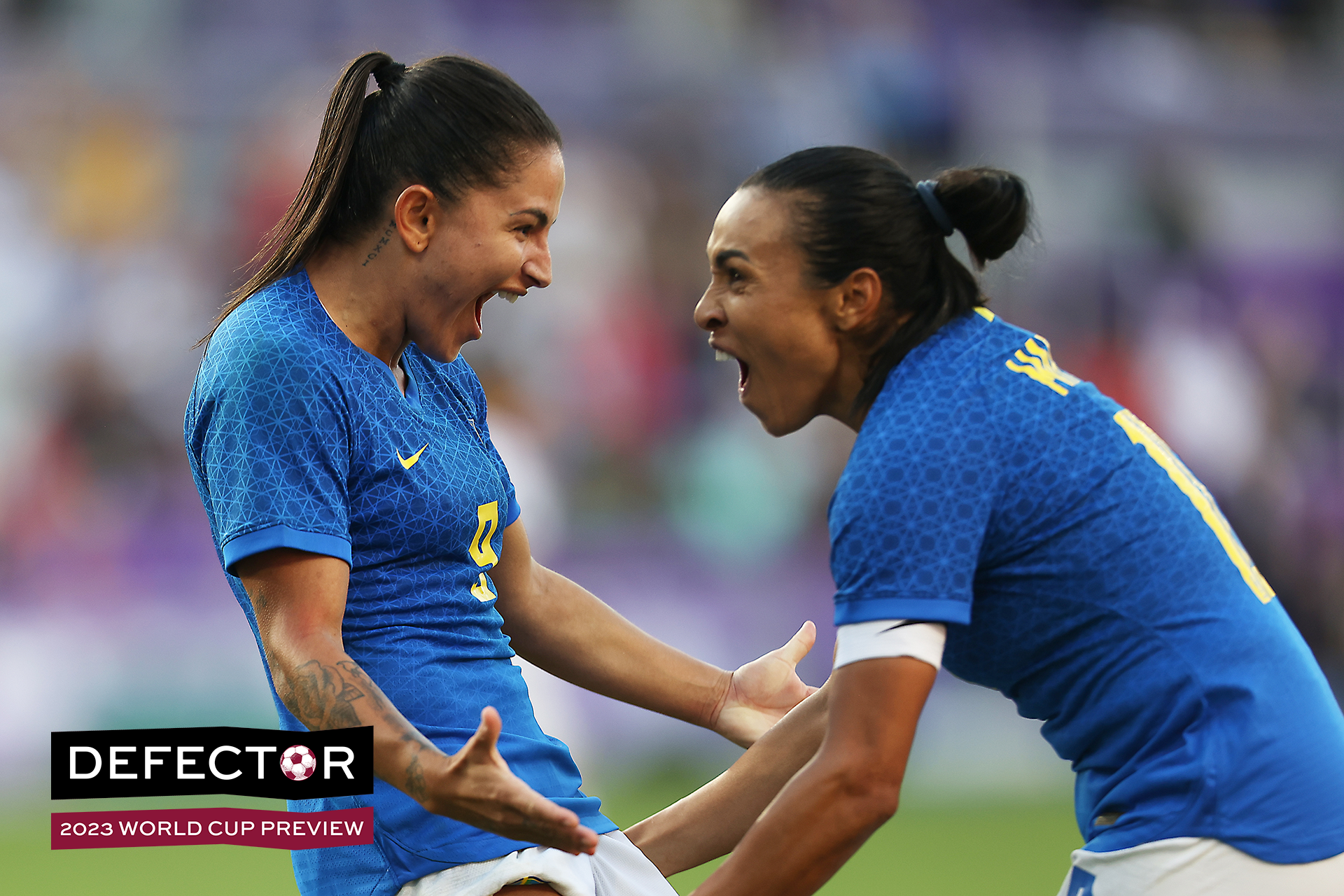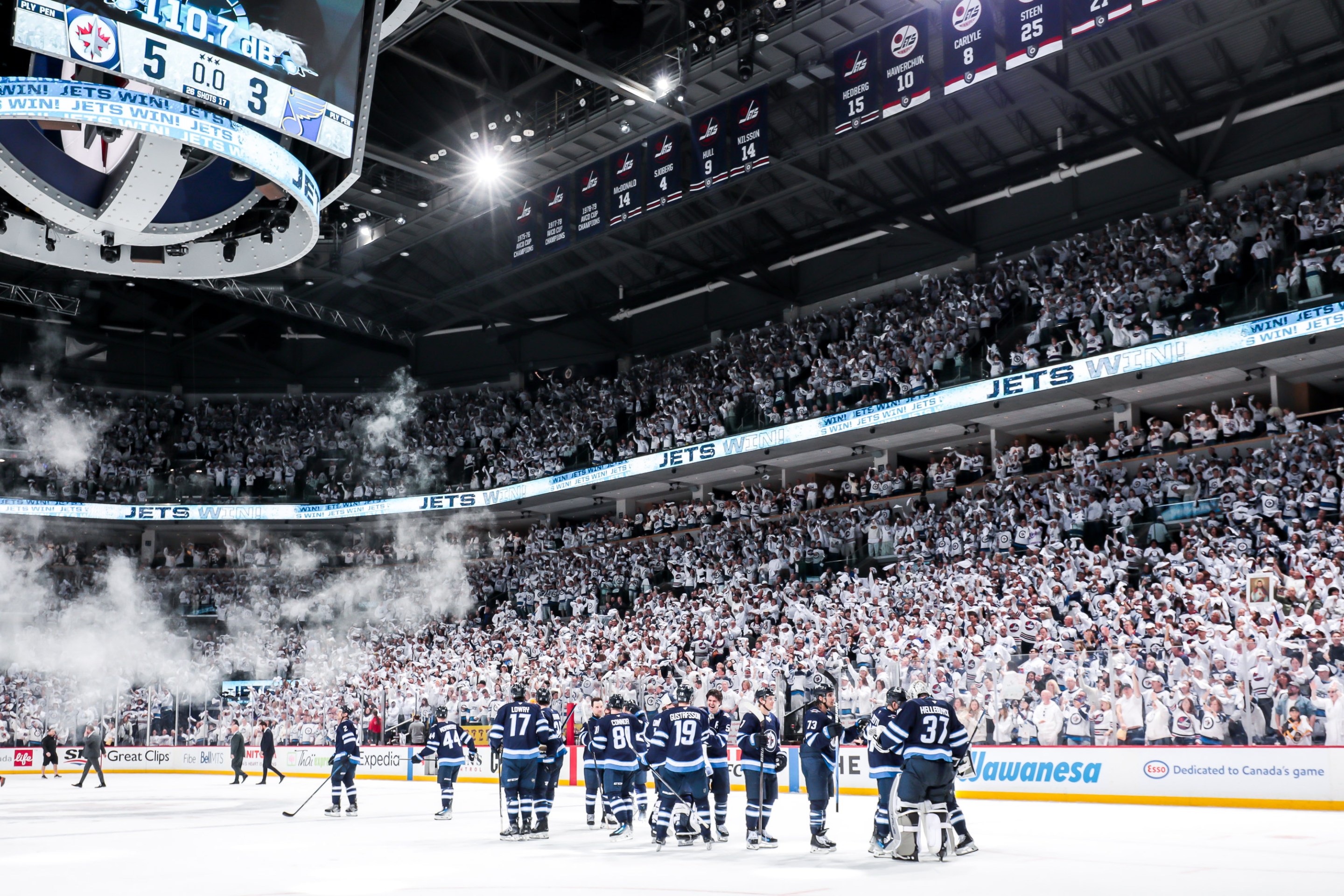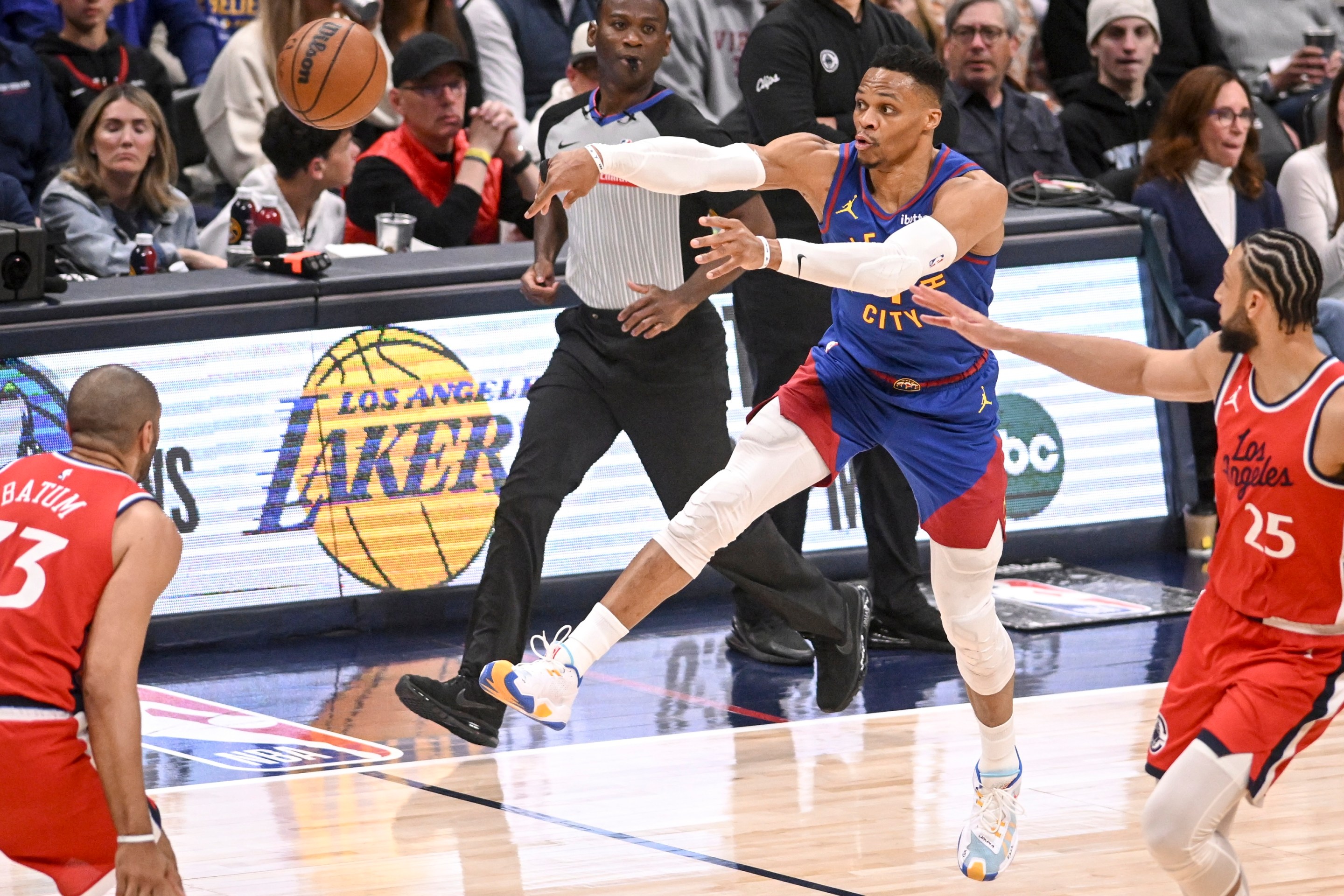It’s almost time for the 2023 World Cup. To help get you ready, we will be providing you with precious information about every team in the tournament. You can read all of our team previews here.
Four years ago, Brazil suited up for the 2019 World Cup with one goal in mind: To win the tournament in honor of its talisman, the GOAT of women's soccer, Marta, in what felt like her last appearance on the world's biggest stage. As the 2023 World Cup rolls around, things have changed. Now, Brazil is suiting up with one goal in mind: To win the tournament in honor of its talisman, the GOAT of women's soccer, Marta, in what feels like her last appearance on the world's biggest stage.
Wait, what?
Yes, this is a bit of déjà vu for Brazil, a team that is stuck blowing on the dying embers of its golden generation while also looking towards a future in which the country can compete for the World Cup trophy once again. This period of transition has been going on since before the last World Cup, which is what makes the repeat of a four-year-old narrative a bit of a conundrum. While some of its eternal stars did retire in the time between tournaments—Cristiane and Formiga, mainly—Marta is still here, the biggest name of all. So is Bárbara, the country's 35-year-old goalkeeper, and 35-year-old Tamires, the country's most capped defender. This is one of the most experienced sides at the World Cup, but will time finally win its war against the Seleção?
That will be the main question heading into Australia and New Zealand this month. Brazil does have young players ready to step up, and it has Debinha heading into another World Cup in her prime (more on her in a bit). Marta will likely not play as many minutes as she did four years ago; now 37, the legend who has scored more goals than anyone at the World Cup with 17 across five tournaments tore her ACL in March 2022. She's reportedly fully recovered, but she's not the player she was four years ago, and definitely not the player who led the 2007 (!) tournament with seven goals en route to Brazil's only appearance in a World Cup final.
Instead of cutting through opponents with her quick feet and incredible dribbling, Marta will instead serve more as an inspirational symbol. Though the country, so often associated with soccer, has not won a World Cup, and will likely not win this time around, it has been as consistent as any team this side of the United States. Whether the era of Marta, so often filled with incredible goals and moments, ends with the team beating the odds and winning the World Cup or not doesn't matter. This truly will be the last time out for Marta at the tournament she made synonymous with her name, and Brazil will compete not just for the country, but for the icon that kept them in the spotlight over the last 20 years. What the future holds after this tournament is unknown, and it will be scary for Brazil to move on to the next era, but for now, there's one last month of watching the greatest women's soccer player of all time do her thing at a World Cup.
Who Is Their Star?
While Marta is, as explained above, the biggest name on the Brazil side, and one of the biggest in the tournament, it is Debinha upon which Brazilians should pin their hopes. The 31-year-old has been an NWSL staple since moving to the North Carolina Courage in 2017. She scored 42 goals in 115 appearances for the Courage, and won back-to-back championships in 2018 and 2019; Debinha was also the MVP of the 2019 championship game, in which North Carolina beat Chicago 4-0.
In January of this year, Debinha swapped over from the Courage to the Kansas City Current, but that hasn't really slowed her down: In 12 games this season, she has six goals, which puts her in fifth place leaguewide, though she scored her goals on the least amount of shots of anyone in that top five (22, and just 12 on target; that's a ridiculous 50-percent conversion rate on her shots on target). She doesn't need too many shots to coolly slice the ball into the goal, and it shows in her stats: Though she's only in the 68th percentile for shots per 90 minutes (3.33) among attacking midfielders, she is in the 99th percentile for non-penalty goals in that same timeframe (0.69).
For the Current, Debinha has been playing more of a no. 10 role at the center of a band of three in interim coach Caroline Sjöblom's system, which should theoretically put her farther away from the goal and make her more of a playmaker. That hasn't really been the case, though, as she only has one assist to go along with those six goals, but that is partly due to how futile the Current are around her. (They are currently the last-place team in the NWSL, and have scored only 17 goals in 15 games so far this season.) In other words, Debinha has needed to do most of everything herself.
She won't have to do that for Brazil, but the team will surely benefit from her ability to take over games if no one else is on form. She can play further up for Brazil if needed, but her best role will still be some form of a second striker/attacking midfielder role, where she'll have most of the ball in attack and a lot of targets to pick out with progressive passes, something she does at a high rate (5.08 per 90 minutes). And while she's not the most powerful of dribblers, she can still keep the ball at her feet and push into opponents' boxes. At the very least, she's more likely to do that herself than to make runs into the box for passes, which means Brazil's offense will have to filter through her feet if it is to put up the goal tallies it will need.
Tell Me About A Cool Youngster
If Debinha doesn't score all of Brazil's goals, it will be because Kerolin takes over. The 23-year-old is Brazil's next great attacker, and she might be one of the best yet. Having moved to the North Carolina Courage in January of 2022 from Madrid CFF, Kerolin has been near unstoppable in the NWSL. She was named to the league's Second XI (the All-NWSL second team) in her debut season, and so far in 2023 she has been even better.
Kerolin is tied for second with Ashley Hatch on the goalscoring list, her eight goals trailing only Sophia Smith's 10. Like her compatriot, Kerolin is also doing this from somewhere other than the striker position, as she plays more of a winger role for the Courage. She also gets fewer shots than those around her on the goals list: Smith has taken 59 total shots, and Hatch 37. Kerolin on the other hand has only taken 27, and like Debinha she converts at an obscene rate of eight goals from 13 shots on target.
Plus, she's both fast and can place her shots perfectly out of reach of goalkeepers:
Kerolin is a versatile player, capable of playing centrally or on the wing: If she is compared to strikers, her playmaking stats jump off the page, while comparing her to wingers makes her 0.51 non-penalty goals per 90 minutes look elite (89th percentile). In short, she's excellent no matter her role, and her versatility should allow Brazil to deploy her where she can cause the most chaos.
Could we see a Debinha-Kerolin frontline? Or will Brazil deploy a 4-2-3-1 that puts Marta, Debinha, and Kerolin all up the field, with the latter two having space and freedom to dominate? These are the options that Brazil manager Pia Sundhage (formerly of the USWNT and Sweden) is afforded by having a player such as Kerolin on the team sheet. My bet is that she will become just as well-known as her legendary teammates before the month down under is through,
Who Is Their Enemy?
Though time and its ravages are likely Brazil's biggest enemy this time around, there's something a bit more nefarious at play here, and it is the power of perception. Brazil, the country, has been known as soccer's most fertile ground, its most magical of destinations, for at least half a century. It was the work of the men's team—which has featured Pele and Garrincha and Socrates and all of the other names that have been etched into soccer history—and its now five World Cup trophies that made it so.
It's a shame, then, that the same perception never really translated to the women's team. As Júlia Belas Trindade wrote in The Guardian, this Brazil team, especially the younger members, are playing not just for Marta and their desire to win a tournament, but for the state of women's soccer in the country and, more broadly, on the continent of South America. Though a small handful of Brazil's players at this upcoming World Cup play in the Brasileirão Feminino, the majority have moved on to Europe or to the United States in order to ply their club trade.
The level of investment in those leagues overshadows that in Brazil by large margins, and that's as much a matter of money as it is one of perceived worth. If there is no interest in investment at home, then the money will flow elsewhere, as will the players. A deep run in the World Cup won't change that all on its own, but good tournament showings tend to increase spending and support for the women's game back home. Take the Netherlands' 2017 European Championship win, which turned the team from an afterthought into a collection of rock stars.
Brazil will hope to have the same effect, even if winning the continental tournament almost every time—the Seleção has won eight of the nine Copa América Femenina editions, losing only to Argentina in 2006—has not done the trick. The players have been fighting for equal recognition and support since at least 2017, when a handful retired from the team following the firing of Emily Lima, the first woman to coach the national side. That fight is still brewing in 2023, and as much as the federation is the enemy, so is the power of perception and inertia.
In order to really advance the sport in such a rabid soccer nation, then, this team will likely have to make another run deep into the tournament, perhaps as far as the final. That's the problem with perception: it's almost as powerful as it is fickle.
National Folk Hero Who I Think Is Cool
November 20 is a day of celebration for Afro-Brazilians, and especially those who consider Zumbi to be a national hero. Born in 1655 in Palmares—a region of Brazil populated by escaped slaves and their descendants, as well as free born individuals of African descent—Zumbi was captured by the Portuguese at the age of six and made a slave under the rule of a priest.
He escaped nine years later and returned to his home region of Palmares, wherein he eventually became king of the quilombo (the local name for settlements established by escaped slaves). In this role, he led the resistance against Portuguese colonial rule for over 15 years. Though the Portuguese eventually captured and killed Zumbi on Nov. 20, 1695, his role in helping resist the colonizers went down in Brazilian lore, and he's the main reason why Black Awareness Day is celebrated on that day.
Scran Or Not Scran: National Dish Edition
Feijoada is a bean stew that often incorporates pork, beef, or both. I am not a beans guy, and have never been, but I have been told that feijoada is close to the platonic ideal of a beans dish.
While I would say the stew itself is not scran, it is usually accompanied by a full plate of rice, cassava, collard greens, and even an intense version of a vinaigrette. Therefore, my verdict for feijoada is Scran.
What Would A Successful World Cup Look Like For This Team?
If one is asking this question in terms of the historical record, then the only fitting conclusion to the Marta era is her riding off into the sunset with the World Cup trophy in hand. It's a similar ending to the one Lionel Messi got, though like Messi, Marta will likely not retire from the sport directly after the tournament. (This is also not just a basic cross-sport comparison; Kerolin herself stated that the team was inspired by Argentina's success last winter.) It would be a storybook ending for a storybook player either way, and a perfect final chapter in the greatest World Cup career soccer has ever seen.
It is also not particularly realistic. Brazil is a weak team right now, having lost three of its last five games against teams that are making the trek to the World Cup. The country's best win so far in 2023 was a 2-1 defeat of Germany in Germany, but the Germans also just lost to 77th-ranked Zambia, so they might have some issues of their own to fix.
Brazil is a dark horse, which is something that Marta and co. haven't really been throughout her time on the national team. Dark horses can surprise, but a trip to the semifinals would likely be the best this side can hope for. Really, a second-place finish in Group F behind France and a subsequent round of 16 victory over Germany would be a perfectly successful World Cup, and if Brazil were to exit in the quarterfinals to, say, England, then that'll be that. The thing about Brazil in this tournament is that it both wants that epic ending for Marta and a performance to blast the country off into its new frontiers. A quarterfinals exit may not accomplish the former, but the latter is probably more important anyway.






